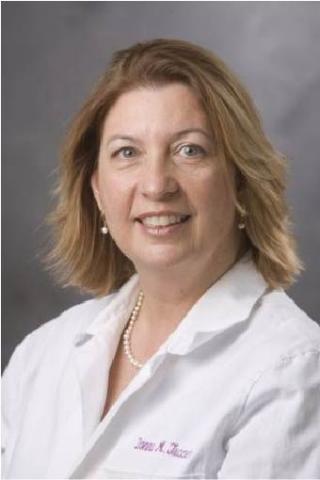Patient A is before me. He is in his late 80s, sharp as a tack and a delightful conversationalist. He lives in elderly housing and has just been discharged from the rehab center. He didn’t expect to be in my office “so soon” after returning home.
His daughter lives in Virginia and needs several days’ notice to get off work and attend his appointments, so he presents by himself. We write everything down in bold, large, block letters on his After Visit Summary so he can read it to her tonight. She stays abreast of all his diagnoses and medications, and she offers emotional support and transportation when he is too weak to drive. She is a sounding board when he has decisions to make about his health care.
Patient B is 10 years younger and 18 months into her dementia diagnosis. She is seated in a transport chair in the exam room, perfectly groomed and coifed. Her daughters are seated by the window. They politely allow their mother to answer each question and discretely nod in the affirmative or negative to corroborate her story. This family has literally wrapped my patient in a family blanket.
One daughter makes daily visits and manages all the medications. The other daughter lives next door and performs the morning check-in before work, and then again after work. A niece lives across the street and covers the “in-betweens.” My patient is proud to still be living in her own home.
Patient C is not in my office today. She is younger and lives at home with her son as she undergoes treatment for metastatic cancer. He is trying to work in order to pay the bills while at the same time providing home care and transportation for his mother to her treatments. Her situation has worsened and she is up most nights — her son along with her. This time the message comes via the computer. “Mom is tired and in pain.” She and her son have spoken to her oncologist and the palliative care physician, and she is entering in-patient hospice tomorrow.
Patient D is not technically my patient at all, but a dear family member. I receive two to five calls per week about her care. At 93 she is the oldest in our family. Despite being blind and frail, along with a home health aide, she was the primary caregiver for her 95-year-old husband who passed away four months ago. As often occurs, she has had a precipitous decline since his death.
There is no caregiver child in this story, as she married very late in life and is now alone. Her care is provided by her elderly brothers — age 86 and 77. They were construction workers by trade, and know little about the intricacies of her care or medications. They struggle as their big sister and the matriarch of the family fails.
Supporting our Communities of Caregivers
These patients’ stories are quite different, yet what they have in common is a dedicated family member (or members) intricately involved in the elderly patient’s care. There are more than 40 million unpaid individuals in the United States providing care to primarily family members but also friends or neighbors aged 65 or older. These caregivers have an important role in our health care system and have taken over a number of activities which used to be provided by health care workers or within a health care facility. In 2014, the economic value of these services was estimated at approximately $470 billion annually, according to AARP.
Although most caregivers provide care once or week or less often, 20 percent provide care on a daily basis, according to the Pew Research Center. Many of these are within the 40- to 65-year-old age group and 61 percent of them are employed, at least half working full time. The second largest age group providing care are themselves over the age of 65.
As might be expected, this “free care” does come at a price. Although caregivers report their effort is rewarding, there is no doubt it can also be stressful. When studied, caregivers report increased physical ailments as compared to non-caregivers, weakened immune systems and, over time, a decrease in overall experience of physical health. Not surprisingly, they report higher levels of stress, depression, emotional and cognitive problems, according to the American Psychological Association.
Caregiving can become isolating and knowledge of community resources may be lacking. Helping to connect families to support services such as adult day care, Meals on Wheels, and home health can be instrumental in relieving burden, as does identifying options for respite care. Often caregivers miss early signs of stress, and counseling or support groups can be quite helpful — particularly if a loved one is suffering from dementia.
In family medicine we are taught early on that a disease does not affect just the patient, but the family, as well. This is where the concept of team care expands beyond the clinic walls. We, as health care providers, would do well to remember the “other patient” in the room. Given that their network of care is essential to maintaining support for a growing population of elderly, it is vitally important to support our communities of caregivers.
Donna Tuccero is associate program director of the Duke Family Medicine Residency Program. Email donna.tuccero@dm.duke.edu with questions.
Editor’s note: A member of the Duke Family Medicine Residency Program leadership team guest blogs every month. Blogs represent the opinion of the author, not the Duke Family Medicine Residency Program, the Department of Community and Family Medicine or Duke University.
